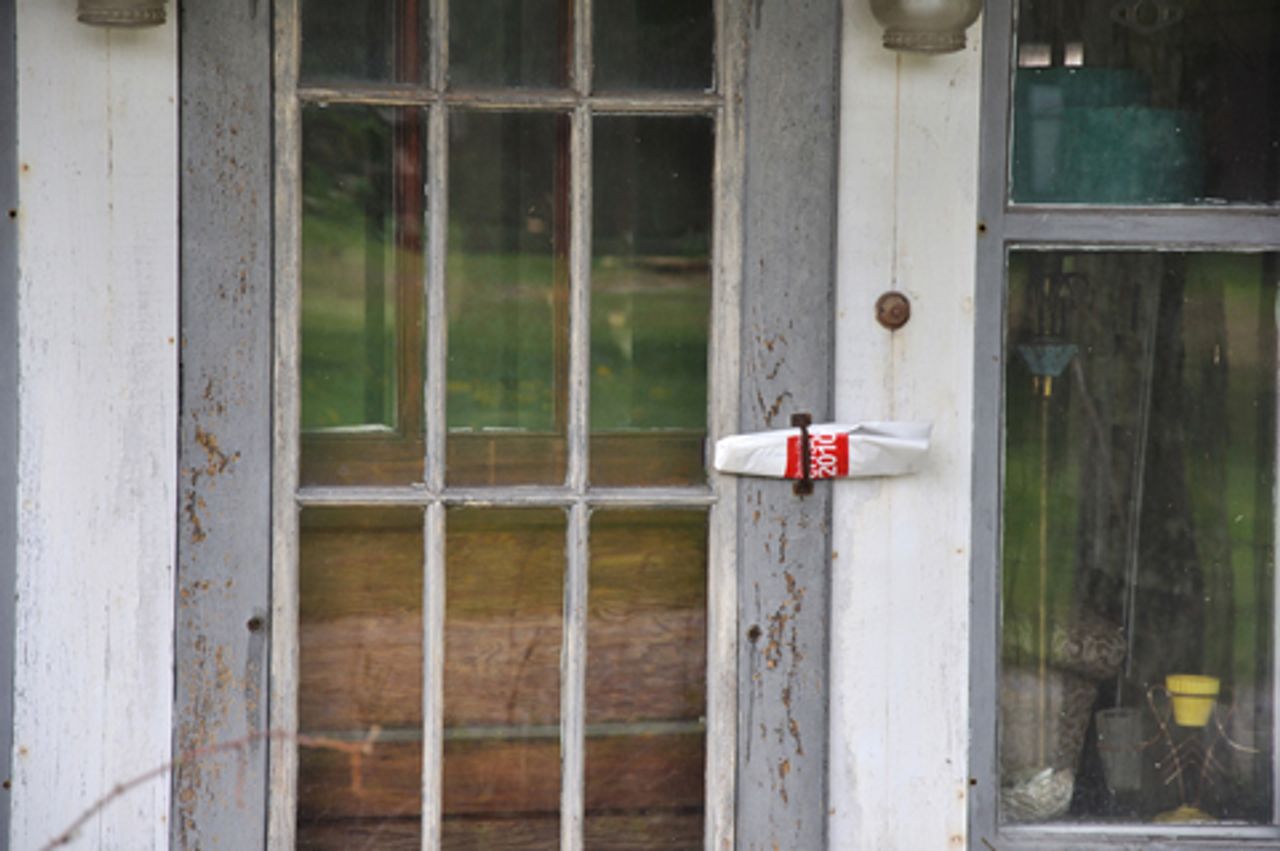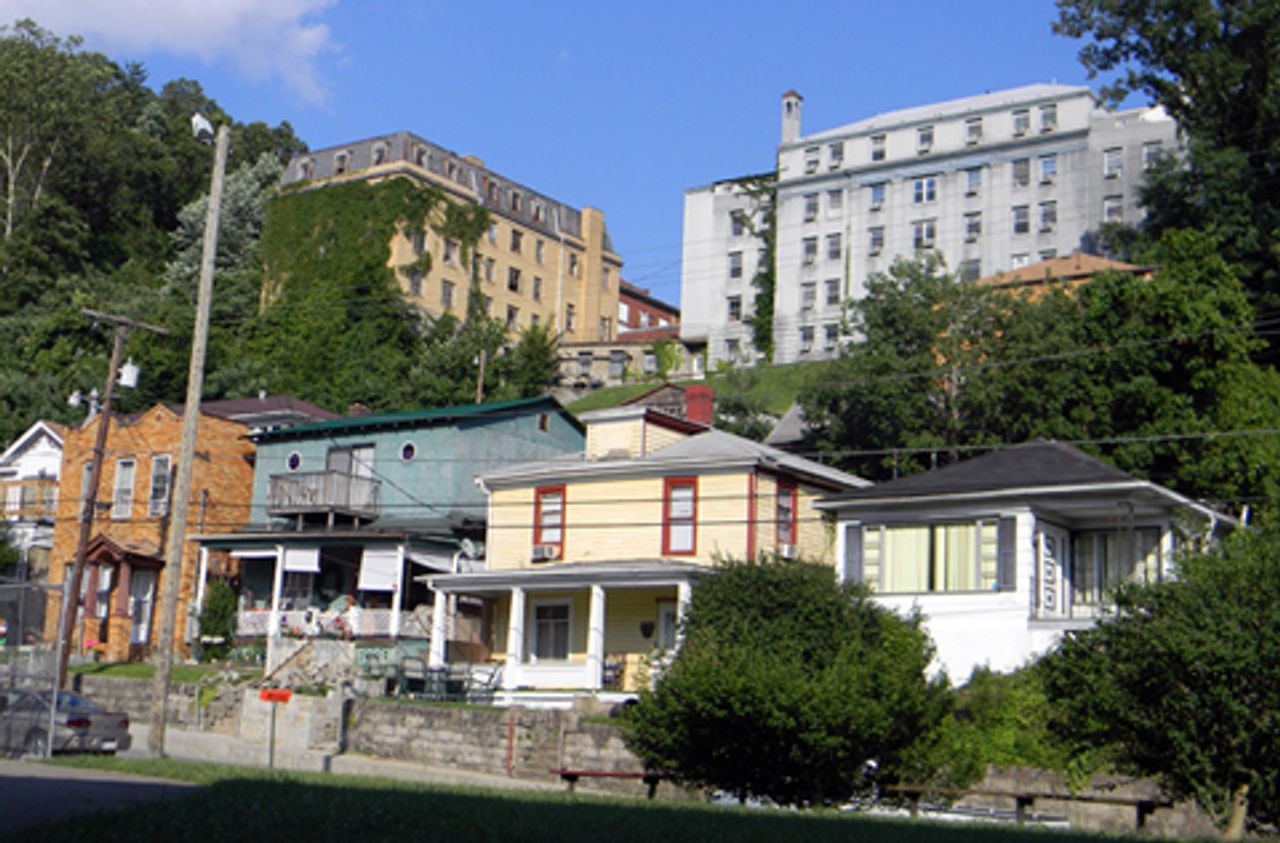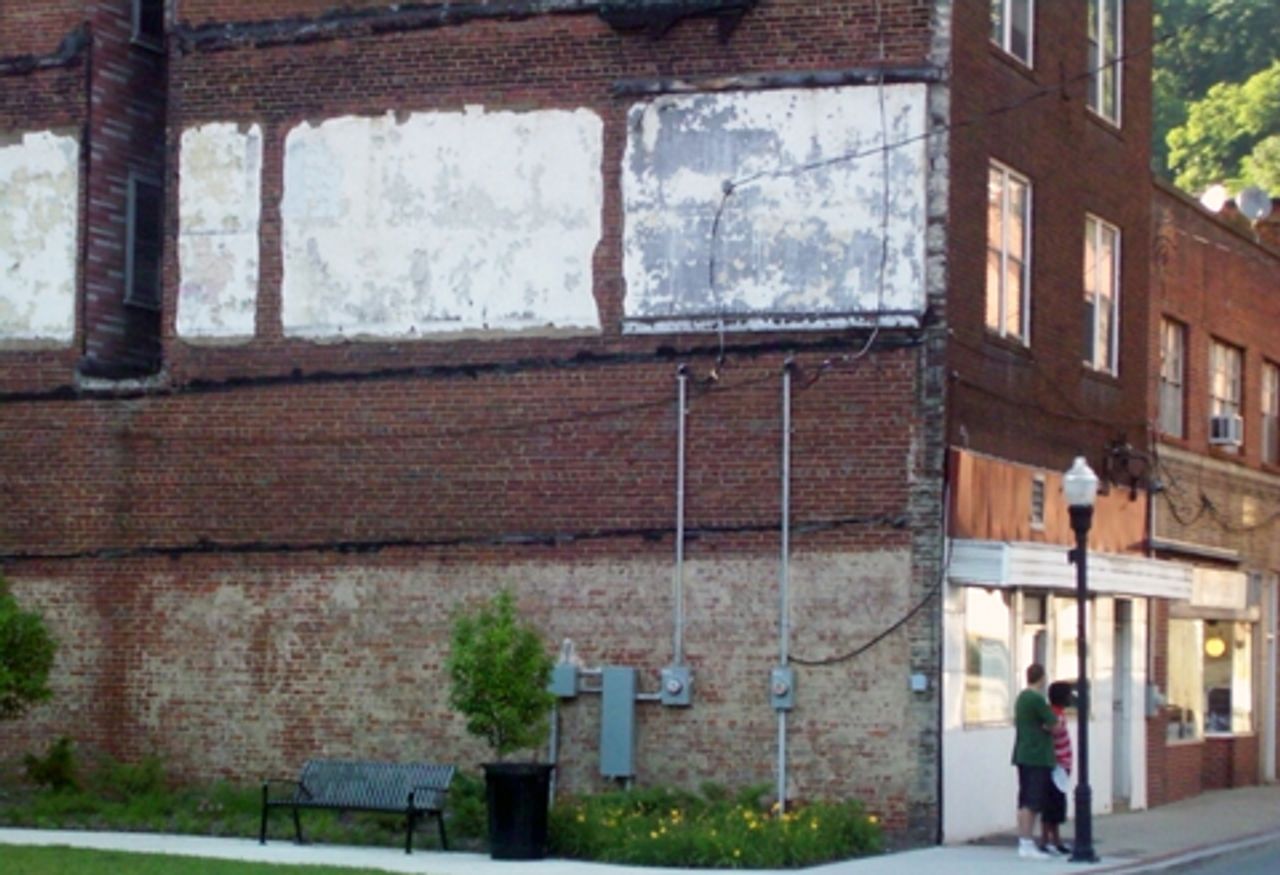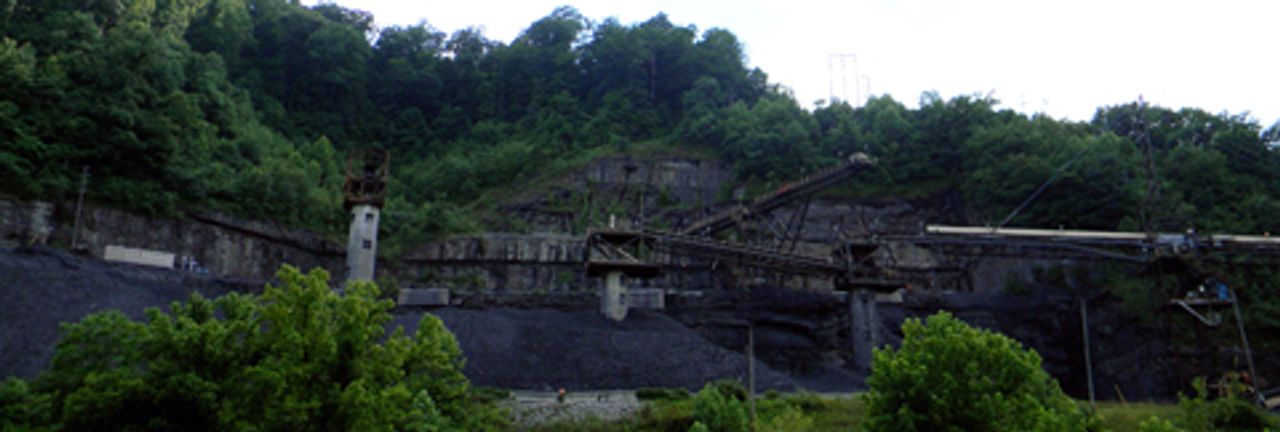By Eric Toussaint - CADTM:
The capitalist sector is growing faster than the public sector and is still predominant in Venezuela’s economy despite the nationalizations.
The share of the private sector (greatly dominated by the capitalist sector |2|) in Venezuela’s gross domestic product has grown from 64.7% in 1998 (before Hugo Chávez was elected president) to 70.9% in the third quarter of 2008. |3| Although the government has nationalized a significant number of large companies in the electricity, telecommunications, steel, food, cement and banking sectors, the capitalist sector has recorded more rapid growth than the public sector, which explains that its relative share in GDP has increased whereas the share of the public sector has decreased (from 34.8% in 1998 to 29.1% in 2008) |4|
This can be explained by the way the country’s oil income is used. The overwhelming majority of the Venezuelan State’s revenue comes from oil exports. The government massively uses the resources coming from oil to improve the living conditions of the poor majority of the population (as well as of the medium income brackets) in the fields of health (where results are impressive), education (also impressive), supply of low-priced basic products through the distribution and marketing channels Mercal |5| and Pdval |6| (staple food and other basic products for households), housing construction, the building of infrastructure and public transport (subway, train), wage increases in the civil service, increases in a large number of grants and social allowances, not to mention expenses in the field of culture and sports. It grants substantial subsidies for cooperatives, communal councils, etc. The result is clearly positive: the percentage of Venezuelans below the poverty line was reduced by half between 2003 and 2008, from 62.1% to 31.5% of the population. As for the percentage of people in extreme poverty, it was reduced by two-thirds, from 29% in 2003 down to 9.1% in 2008; |7| illiteracy dropped sharply, the level in training improved, access to free healthcare increased greatly, mass consumption rose.
But to a large extent the capitalist sector is also benefiting from government spending because it is still dominant, by a long way, in the banking sector, in trade and in the food industry. The extra money that goes to the people and comes from public spending ends up in the capitalists’ pockets because it is in the capitalist banks that individuals (and also cooperatives, municipal councils, municipalities and many other public entities) deposit their money. It is the capitalist banks that issue consumer credit facilities in the form of credit cards, and support a growing share of the consumption (and charge high interest rates for this). It is the capitalist companies of the food industry that produce or market most of the food products consumed by the masses. It is the capitalist import companies that bring from abroad the many imported products consumed by Venezuelans. The private retail chains still dominate trade even if Mercal and Pdval are significant players in supplying basic products. When the State nationalizes private companies that belong to the national capital, it is the local capitalists that receive buyout compensations from the State.
In brief, the capitalist sector continues siphoning off most of the money spent by the State to help the poor or middle-income sectors of the population.
According to a study |8| by Mark Weisbrot and Luis Sandoval that is in fact very favourable to the Chávez government, the private financial sector grew by 37.9% in 2004, by 34.6% in 2005 and by 39.2% in 2006, while the growth of the public sector (all sectors taken together) was only 12.5% in 2004, 4.1% in 2005 and 2.9% in 2006.
As stated by Victor Álvarez : “During the previous mandate of President Chávez (2000-2006), most financial, fiscal, exchange rate incentives, most public spending, most technical assistance, etc., went to the existing production apparatus, fundamentally consisting of commercial companies, which reproduce a capitalist mode of production that is, paradoxically, the very one we want to overtake and transcend.”
We are thus far from the assertions made by the mainstream media, which see in the Chávez administration a rampant imposition of state control over the Venezuelan economy.
Gifts made to the banks
An additional issue, stems from the policy of overvaluation of the Venezuelan currency against the dollar. This question requires some explanation. Since 2003, companies that want to import goods and services have had to buy dollars from a state administration called CADIVI. This is a useful measure taken to fight capital outflow. The problem is that the exchange rate between the bolivar and the dollar overvalued the value of the former. It therefore exacerbated a perverse pattern: for a capitalist who has a large amount of bolivars, it is more profitable to change them for dollars which are sold cheaply by the State and import products from the United States or elsewhere than to produce them in the country. Thus the policy of an overvalued bolivar deterred productive investment and encouraged trade based on the frenetic import of goods |9| and sale of the same through the big private retail networks. These massive imports are in fact subsidized by the State since the State sells the private sector the cheap dollars it has accumulated through its oil exports. Another point also needs to be examined: how this policy of an overvalued bolivar and a high level of imports influenced the inflation rate, which has been particularly high in Venezuela in recent years. This high inflation rate reduces the impact of the pay rises granted by the government.
One vicious example of this policy of an overvalued bolivar and of gifts made by the government to the private banks: the Venezuelan State bought debt bonds issued by Argentina in 2004-2005. The problem is that it sold part of these Argentine debt bonds, drawn up in dollars, to the private banks. These banks bought them with bolivars at the official overvalued exchange rate. What did some (in fact many) of them do with these bonds? They sold these Argentine debt bonds in the United States or elsewhere to obtain dollars. This allowed them to bypass the control imposed by the Venezuelan State over capital movements. Officially, they did not export capital; they only got Argentine debt bonds out of the country.
Since then, the State has kept on making gifts to private banks thanks to similar manoeuvres. PDVSA and other public entities issue public debt bonds drawn up in dollars that are bought in bolivars by Venezuelan banks at the official exchange rate. Then these banks sell part of the bonds on the international market for dollars |10|. In brief, the State policy has two negative consequences: first, it permits capital flight in a circuitous but perfectly legal way; second, it encourages parasitic banking behaviour (buying of debt bonds) to the detriment of productive investment.
The conclusion that can be drawn is that although the State is trying to carry out a policy of endogenous development (i.e. designed to meet the internal demand through greater domestic production), the way the oil money is redistributed, combined with the overvaluation of the bolivar, tends to strengthen the capitalist sector and its importing pattern.
In a speech given during the meeting of intellectuals organized by the CIM, the writer and lawyer Luis Britto aptly summed up the situation: “We live in a dual society, and in a fable I wrote I explained that if one tries to set up a mixed system with hens and foxes in one single henhouse, then the following week, there will only be foxes left, and then they will eat the farmer.” |http://www.cadtm.org/IMG/article_PDF/article_a4492.pdf and Martha (...)" rel="footnote" href="http://www.cadtm.org/The-Venezuelan-economy-in#nb11">11|
Dealing with the thorny question of exchange rates: the January 2010 devaluation
In January 2010, the government carried out a devaluation. What does this devaluation consist of? Two official rates were set: the first one represents a 21 percent devaluation of the bolivar against the dollar (instead of 2.15 bolivars, 2.6 bolivars are needed to obtain one dollar); the second rate represents a 100 percent devaluation (one has to pay 4.3 bolivars for one dollar instead of 2.15 bolivars). The first rate (2.6 bolivars per dollar) is in force for expenses considered to be vital or at least to be a priority: imports of food, medicines, technologies, equipment for industrial or agricultural production, imports made by the public sector, the payment of scholarships to Venezuelan students studying abroad, of pensions to retired people living abroad. The second rate (4.3 bolivars per dollar) is applied to imports of automobiles, beverages, tobacco, cell phones, computers, home appliances, textiles, chemical and metallurgical products, rubber, etc.
In the short term, this devaluation will increase the State’s tax revenues. The dollars that the State gets from oil exports will be sold for a larger amount of bolivars. This is certainly one of the main goals pursued by the government which has seen its tax revenues dwindle due to the impact of the international crisis on the country’s economy. But this does not mean that the Venezuelan State is going to win on all fronts. The repayment of the public debt, 67.8 percent of which is drawn up in dollars, will cost the government more. The Venezuelan bankers and other capitalists who bought debt securities drawn up in dollars will get richer once again.
Obviously there are other consequences: for the workers and all low income earners who receive this income in national currency, the devaluation means lower purchasing power: the cost of the products they consume will be higher because many products are imported or produced in the country with a large imported component. Importers, retailers, producers will pass on the additional costs to the retail price. This loss of purchasing power can only be limited or compensated if wages increase in proportion to the cost of living, which is not the case. On 1 May 2010 Hugo Chávez decreed a 15 percent increase in minimum wages and pensions but inflation reached 25 percent in 2009 and will probably be even higher in 2010.
This devaluation aims at other objectives in the longer term, but it would be risky to say whether they can be reached or not. Among these objectives, the most important one is certainly the promotion of import substitution. Since importing now costs 21 or 100 percent more (depending on the products imported), imports should decline and local producers should be in a better position for selling their production on the national market. Even better: the devaluation should convince them that it is profitable to produce products that were formerly imported. This could create a virtuous circle thanks to which the country could strengthen its industrial and agricultural base by replacing imported products with local ones.
Translated by Stéphanie Jacquemont and Judith Harris, in collaboration with Francesca Denley and Christine Pagnoulle
Next part: Suggested paths to 21st century socialism in Venezuela (Part 4)
Part 1 : “Venezuela. Nationalization, workers’ control: achievements and limitations” Part 2 : “Debate and contradiction in the PSUV (United Socialist Party of Venezuela)”
Footnotes
|1| The first part of this series ‘Bolivarian Venezuela at the crossroads’ was posted on the CADTM website on 14 April 2010 under the title ‘Venezuela. Nationalization, workers’ control: achievements and limitations’, the second part was posted on 18 June 2010http://www.cadtm.org/Debate-and-con... (see also: http://www.europe-solidaire.org/spip.php?article17417 ) under the title ’ Debate and contradiction in the PSUV (United Socialist Party of Venezuela)’
|2| For instance, the share of social economy within the private sector is very low: it reached 1.6% of gross domestic product at the end of 2008, up from 0.5% in 1998. Out of a total of 11,692,071 working people at the end of 2008, only 201,773 work in the social economy cooperatives, i.e. barely 1.7%.
|3| See Victor Álvarez “The transformation of the Venezuelan productive model : review of ten years of government”, Revista La Comuna n°0, p. 37 to 55. Victor Álvarez was Minister of Basic Industries in the Chávez government from January 2006 to August 2007.
|4| This statement has to be qualified: until 2002, although a public company, the operation of PDVSA (Petróleos de Venezuela Sociedad Anónima) had progressively favoured the private sector. A large part of its revenue was declared and taxed in the United States. The measures taken by the Chávez government from 2002 onwards enabled the State to take over the company’s management, which resulted in a strong increase in revenue to be later used to finance social policies.
|5| The Misión Mercal S.A. (MERCado de ALimentos) is one of the social programmes promoted by the Venezuelan government. Officially launched on 24 April, 2003, the Misión Mercal is designed to serve the food sector and comes under the control of the Ministry of Food. The programme involves building shops and supermarkets and supplying them with staples and basic products at low prices that are affordable by the needy. Food products are subsidized and arrive on the shelves without middle-men, so that the prices offered usually represent a discount of 30% to 45%, compared to the prices charged in other distribution channels.http://es.wikipedia.org/wiki/Misi%C3%B3n_Mercal
|6| Productora y Distribuidora Venezolana de Alimentos (Pdval) was created in January 2008http://www.abn.info.ve/go_news5.php?articulo=117377
|7| Quoted by Victor Álvarez.
|8| See Mark Weisbrot and Luis Sandoval, The Venezuelan Economy in the Chávez Years, Center for Economic and Policy Research, Washington, 2007,www.cepr.net
|9| A personal anecdote: in late November-early December 2006 in Caracas, I was utterly astounded to see in the middle-class neighbourhoods that thousands of Christmas trees imported from Canada were being sold. In the shops, they were also selling quantities of devices to spray artificial snow on the trees. It should be added that in Caracas the temperature around Christmas is over 20°C. The massive import of Christmas trees from the Great North is very profitable thanks to the overvalued bolivar. It is true that Chávez criticized this pattern of systematic imports, all the more so as, he said, it was linked to cultural traditions (Santa Claus for instance) that were also imported and unquestioningly adopted to the detriment of local cultures.
|10| The foreign financial papers The Economist and the Financial Times regularly stress that Venezuelan private banks are very pleased with this opportunity given by the State to bypass capital movements control.
|11| See http://www.cadtm.org/IMG/article_PDF/article_a4492.pdf and Martha Harnecker “Selección de las opiniones más destacadas de los intelectuales reunidos en el CIM” (Selection of the most prominent opinions of the intellectuals in the CIM meeting)http://www.rebelion.org/noticia.php?id=88131 which takes up extracts from several speeches given during the meeting of intellectuals organized by the CIM in early June 2009.
P.S.
Eric Toussaint, Doctor in Political Science (University of Liege and University of Paris VIII), is president of CADTM Belgium (Committee for the Abolition of Third World Debt, www.cadtm.org). He is the author of A diagnosis of emerging global crisis and alternatives, VAK, Mumbai, India, 2009, 139p; The World Bank, A Critical Primer, Pluto Press, Between The Lines, David Philip, London-Toronto-Cape Town 2008; Bank of the South. An Alternative to the IMF-World Bank, VAK, Mumbai, India, 2007; Your Money or Your Life, The Tyranny of Global Finance, Haymarket, Chicago, 2005.
July 31st 2010
Bolivarian Venezuela at a Crossroads, Part 2: Debate and Contradiction in the PSUV











 Conversely, Jamaica, Trinidad and Guyana have weakening economies, but they have sport teams that are competitive at the highest level. The Eastern Caribbean has semi-strong economies.
Conversely, Jamaica, Trinidad and Guyana have weakening economies, but they have sport teams that are competitive at the highest level. The Eastern Caribbean has semi-strong economies.  The international community led by Edmond Mulet, the UN resident in Haiti, is pushing full speed ahead for the election to take place on November 28, 2010, under the direction of the discredited principals. Who is the toro (the bull) in Haiti? The people of Haiti or the international community? This determination will soon come to a final decision. The cost of the election as set by the board is around 27 million dollars. The Haitian government has earmarked only 7 million, expecting the additional 20 million to come from the international community.
The international community led by Edmond Mulet, the UN resident in Haiti, is pushing full speed ahead for the election to take place on November 28, 2010, under the direction of the discredited principals. Who is the toro (the bull) in Haiti? The people of Haiti or the international community? This determination will soon come to a final decision. The cost of the election as set by the board is around 27 million dollars. The Haitian government has earmarked only 7 million, expecting the additional 20 million to come from the international community. 




